Dynamics of contact languages: the creole example
A new paper about “Modeling the Emergence of Contact Languages” just appeared in PLoS ONE. Contact languages are born out of the non-trivial interaction of two (or more) parent languages. Nowadays, the enhanced possibility of mobility and communication allows for a strong mixing of languages and cultures, thus raising the issue of whether there are any pure languages or cultures that are unaffected by contact with others. As with bacteria or viruses in biological evolution, the evolution of languages is marked by horizontal transmission; but to date no reliable quantitative tools to investigate these phenomena have been available. An interesting and well documented example of contact language is the emergence of creole languages, which originated in the contacts of European colonists and slaves during the 17th and 18th centuries in exogenous plantation colonies of especially the Atlantic and Indian Ocean. In this paper, we focus on the emergence of creole languages to demonstrate a dynamical process that mimics the process of creole formation in American and Caribbean plantation ecologies. Inspired by the Naming Game, our modeling scheme incorporates demographic information about the colonial population in the framework of a non-trivial interaction network including three populations: Europeans, Mulattos/Creoles, and Bozal slaves. We show how this sole information makes it possible to discriminate territories that produced modern creoles from those that did not, with a surprising accuracy. The generality of our approach provides valuable insights for further studies on the emergence of languages in contact ecologies as well as to test specific hypotheses about the peopling and the population structures of the relevant territories. We submit that these tools could be relevant to addressing problems related to contact phenomena in many cultural domains: e.g., emergence of dialects, language competition and hybridization, globalization phenomena.

 CONNECT
CONNECT

